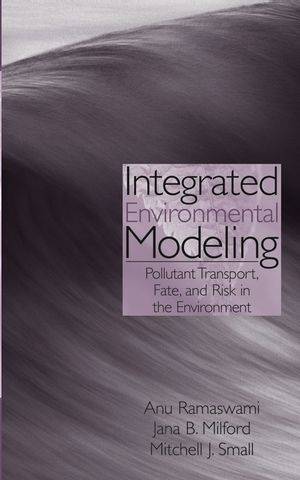Read more
Informationen zum Autor Anu Ramaswami, PhD, is an Associate Professor of Environmental Engineering in the Civil Engineering Department of the University of Colorado at Denver. She serves on the editorial board of the International Journal of Phytoremediation and chairs the technical advisory board of Engineers Without Borders-USA. Jana B. Milford, Phd, is an Associate Professor of Mechanical Engineering at the University of Colorado at Boulder. She recently served on the National Research Council Committee on Air Quality Management in the United States, and is a member of the editorial advisory board for the Journal Environmental Science & Technology. Mitchell J. Small, Phd, is the H. John Heinz III Professor of Environmental Engineering at Carnegie Mellon University, Pittsburgh, Pennsylvania. He is a Fellow of the Society for Risk Analysis and serves as an associate editor for the Journal Environmental Science & Technology. Klappentext A unified presentation of environmental model development, implementation, and testingIntegrated Environmental Modeling teaches model development, model implementation, and model testing skills in a unified manner, crosscutting the three "media" comprising environmental systems--air, water, and soil--by focusing on parallels and similarities between them, and introducing a new generation of multimedia models. No other single volume offers comprehensive coverage of chemical transport and fate in all three environmental media, including the resulting impacts on the biosphere and human health, with a focus on the fundamental processes underlying environmental modeling.Integrated Environmental Modeling provides broad-based training in the development of pollutant transport and fate models in air, water, and soil, with a focus on five essential competencies:* Understanding the fundamental process principles that govern contaminant transport and transformations in multimedia environments, emphasizing the parallels and links between different media* Learning model development skills, starting from the simplest conceptual models and building more complex and realistic models that couple component process modules at the appropriate spatial and temporal scales of resolution* Using statistical methods and data sources to estimate input parameters and characterize model sensitivity and uncertainty* Gaining hands-on experience with computer-aided implementation and evaluation of fate and transport models using realistic case study examples* Applying fate and transport models to evaluate pollutant interactions with the biosphere, particularly in human exposure modeling and health risk assessmentComplete with case studies, Integrated Environmental Modeling is a valuable, single-source tool for senior and graduate students in environmental science and engineering courses on pollutant transport, remediation, and risk assessment, and an essential reference text for professionals in industry, consulting, and government agencies responsible for environmental assessment and risk analysis. Zusammenfassung Integrated Environmental Modeling teaches environmental model development, implementation, and testing in a unified manner, applicable to all three natural media. * Details the fundamentals of pollutant transport, including physical, chemical, toxicological, and legislative aspects of pollutant characterization. Inhaltsverzeichnis Dedication. Acknowledgments. Preface. 1. Introduction to Modeling the Transport and Transformation of Contaminants in the Environment. 2. Nature of Environmental Pollutants. 3. Intermedia Contaminant Transfer: Equilibrium Analysis. 4. Kinetics of Intermedia Pollutant Transfer. 5. Transport Fundamentals. 6. Overview of Numerical Methods in Environmental Modeling. 7. Overview of Probabilistic Methods and Tools for Modeling. 8. Model...

